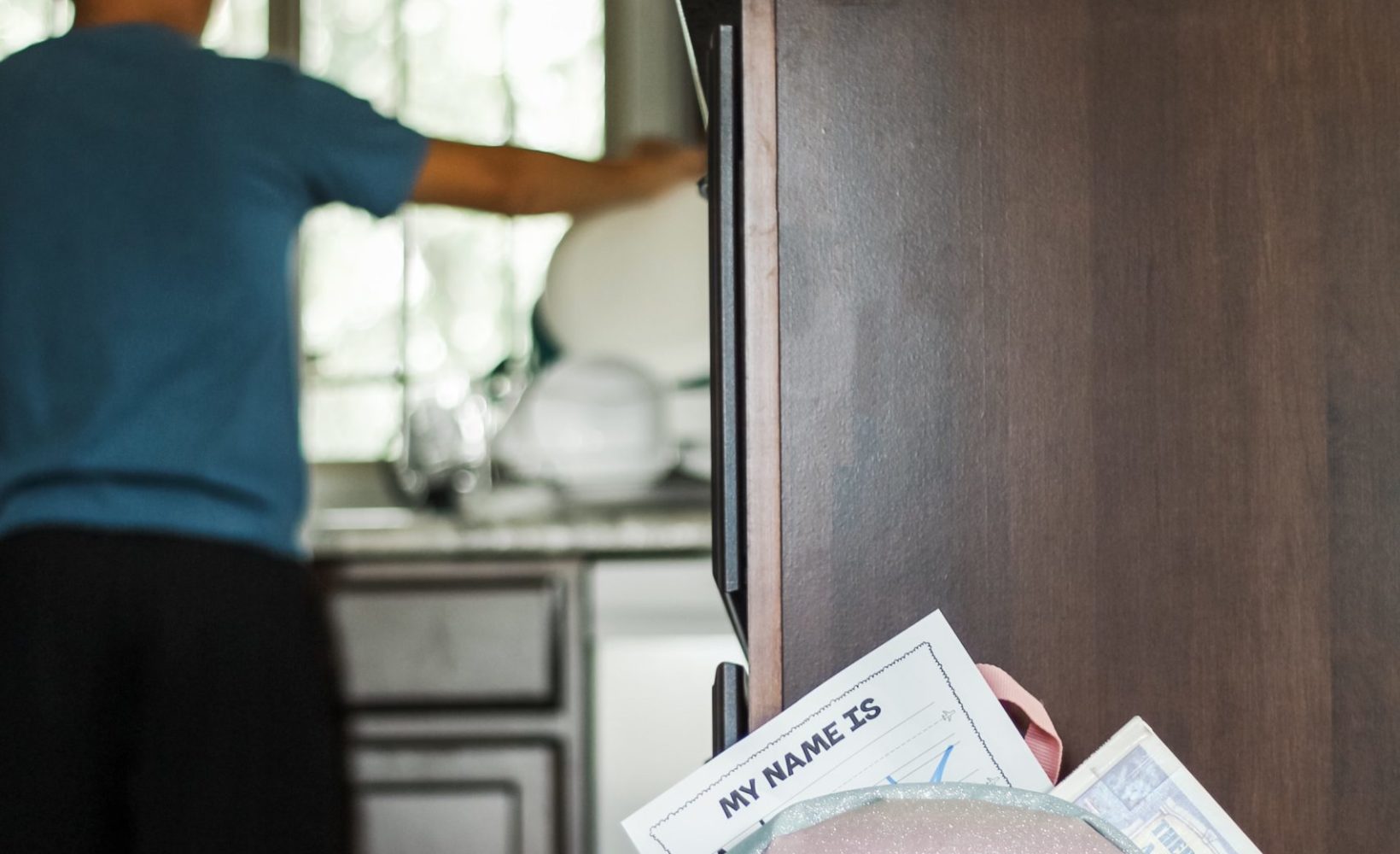As the second half of the school year ramps up and we look ahead to busy spring events, we’re dusting off a blog post from the archives about managing paper clutter. Enjoy!
As a decluttering coach, I get asked for tips on how to tidy everything home-related, but here’s a little secret: papers are my favorite category to tidy. So here is my number one tip to organize paper clutter.
As with all great life advice, this tip is probably something you’ve probably heard before. You know, things like: How to relieve stress? Sleep and exercise. How to have healthy skin? Drink water. How to have a smoother morning? Prepare the night before.
Okay, so how DO you stay on top of paper clutter?
Create a home for it.
I’m not talking about building a cutesy file-rack dollhouse (go for it, if you are that handy!). I’m talking about simply designating a spot for those papers. It’s the key to staying organized, and here’s why:
When those carnival flyers, PTA forms, and reading logs are scattered all over the house, our brain feels overwhelmed. There’s this anxiety in the back of our brain that is constantly fretting about keeping track of things and worried about losing something.
Has anyone else experienced your child’s teacher sending you a second email asking about a missing signature page, and you have no idea where it is? Not fun. The surfaces of your home are mental to-do lists. Every time you walk into the kitchen and the counters are covered with papers, your head starts to tally up tasks to clear it off, which can feel never-ending.
A big reason people don’t put something away is that they don’t know where it goes. Empower your kids, or another caregiver, to help you stay organized by creating a designated home for papers. It takes away that mental work (and excuse) by making it easier to tidy up with a pre-determined spot just for school papers. (This, in turn, helps foster independence and creates more time for after-school connections.)
And lastly, having a space for papers can help minimize the amount coming into your home. When we don’t have a spatial “budget” for something, it can be a slippery slope to accumulate more. But by having a bin/drawer/rack, there’s a visual limit to how much we can keep. When it’s full, it’s full. It reminds us to let something go before something new can come in.



Leave a Reply